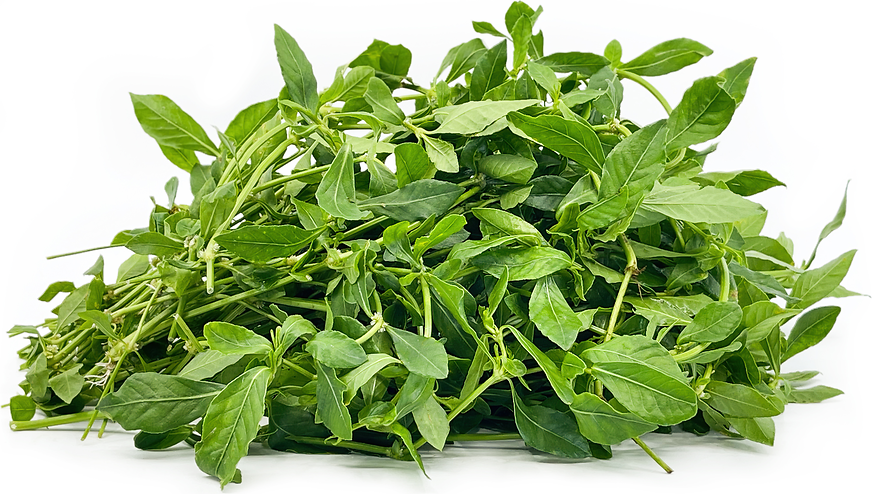


Ponnaganti Koora Leaves
Estimated Inventory, lb : 0
Description/Taste
Ponnanganti Koora leaves are small to medium in size and are elongated, lanceolate, and oblong in shape, averaging 3-15 centimeters in length and 1-3 centimeters in width. The long, narrow, dark green leaves are smooth with flat edges and taper to a point on the non-stem end. The ponnaganti koora plant is an erect, bushy perennial with several spreading stems and small white flowers. The leaves are succulent and crisp and have a strong herbal and nutty flavor that is similar to spinach.
Seasons/Availability
Ponnaganti Koora leaves are available year-round.
Current Facts
Ponnaganti Koora leaves, botanically classified as Alternanthera sessilis, grow on a prolific perennial herb and are members of the Amaranthaceae family. Also known as Matsyaakshi, Ponnonkanni keerai, Ponnanganni, Mukunuwenna, Gudari Saag, and as Water Amaranth, Sessile Joyweed, and Dwarf Copperleaf in English, Ponnaganti Koora is often referred to as a miracle plant in India where it is known by many names often preceded with the word “pon” meaning “gold.” The Ponnaganti Koora plant is difficult to identify as it has a host of aliases and even different growth patterns depending upon the conditions in which it is grown. Ponnaganti Koora thrives in moist, hot climates and is often found growing in swampy areas around rice and sugar cane fields in tropical and subtropical regions. Ponnaganti Koora is cooked as a vegetable, used as a beauty aid, and used as a medicinal treatment to improve digestion.
Nutritional Value
Ponnaganti Koora leaves are a good source of beta-carotene, iron, fiber, calcium, and vitamins C and A.
Applications
Ponnaganti Koora leaves can be consumed in both raw and cooked applications such as sautéing, stir-frying, and boiling. To prepare the leaves they should be removed from the stems, which can be tough and fibrous, and thoroughly washed. As a salad green, the leaves are best when harvested young as they are more tender and mild. The leaves can also be cooked and added to soups, curries, stir-fries or simply sautéed with ghee. Ponnaganti Korra is often paired with lentils, rice, turmeric, chiles, cumin, garlic, onion, sesame oil, mustard seed, coriander, carrots, and radish. They will keep for a couple of days when stored in a plastic bag in the refrigerator.
Ethnic/Cultural Info
Ponnaganti Koora leaves are traditionally used in Ayurvedic medicine to cleanse and improve overall dietary health. Ancient books and Indian healing gurus claim that if the leaves are eaten for forty-eight days, Ponnaganti Koora will provide a high content of vital minerals and nutrients that can help nourish the eyes and will cause the skin to have a natural “glow.” The oil of Ponnanganti, called thailam, is also said to have a cooling effect and is used to treat excessive body heat and headaches in India.
Geography/History
Ponnaganti Koora leaves are native to India and Sri Lanka and spread to regions across Asia. Today it can be found in specialty grocers and fresh markets in Asia, Australia, Africa, the Caribbean, Central and South America, and the southeastern United States.
Recipe Ideas
Recipes that include Ponnaganti Koora Leaves. One
| Saffron Trail |
|
Beet, Feta and Water Amaranth Salad |




